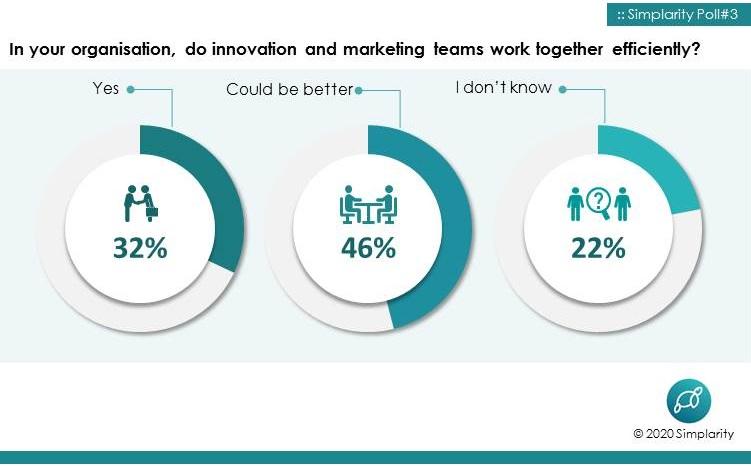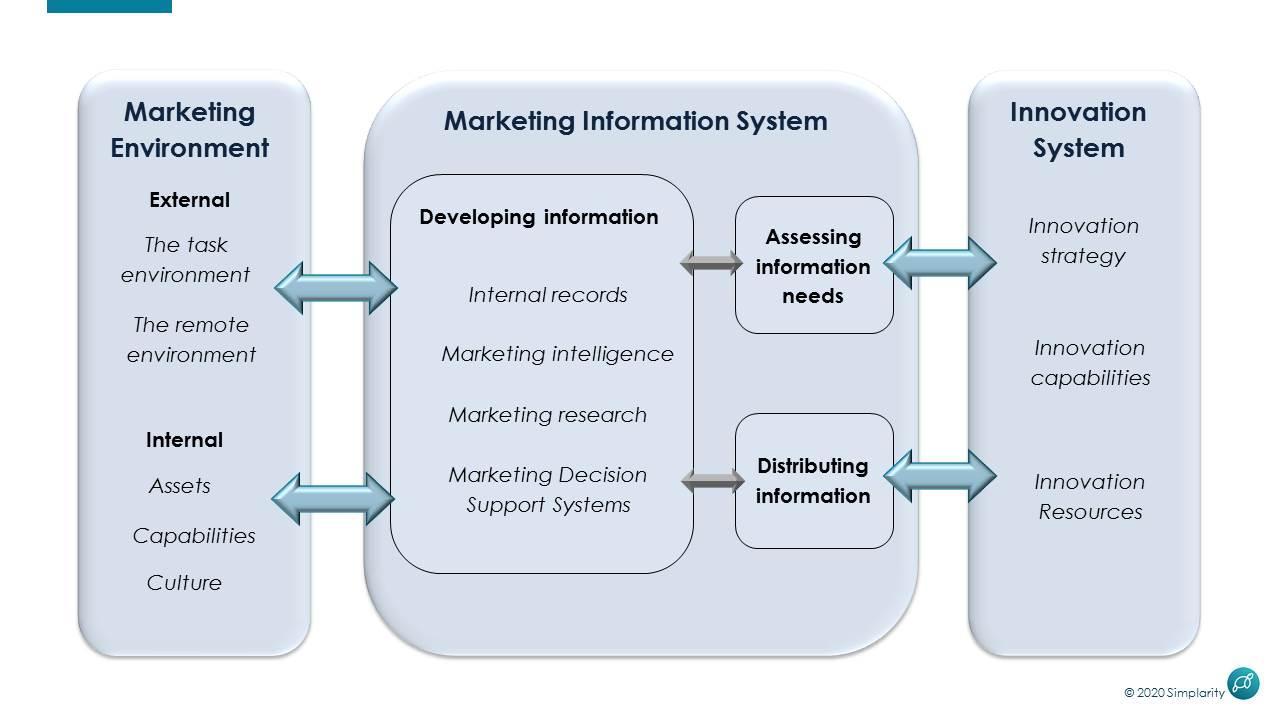
Trying to build your innovation capabilities? Then don’t underestimate the importance of marketing. There are at least 3 reasons why it is essential for marketing and innovation teams to work together efficiently and effectively. We discuss those reasons and suggest how to start building such a collaboration.
A business guru Peter Drucker famously said “business has only two functions: marketing and innovation“. He believed that those two functions were the cornerstones of a business success. He went even further, saying that “marketing and innovation produce results; all the rest are costs.”
Yet, how often do we observe, particularly in times of crisis such as experienced currently, that marketing and innovation are not among the top priorities of senior and executive management! Moreover, the budgets of these two functions are usually first to be guillotined when the going gets tough. Even though it is known that “companies that invest in innovation through a crisis outperform peers during the recovery”, McKinsey’s survey conducted in April 2020 indicates that the share of executives who listed innovation as a top priority dropped by 32% comparing to the pre-crisis level [1]. The same goes for marketing. According to the IPA Bellwether Report “UK marketing budgets were slashed to their lowest levels in the twenty-year history of the IPA Bellwether Report in light of the devastating impact of the coronavirus”.
Perhaps, one of the reasons why companies cut investment in innovation and marketing during a crisis is that they struggle to build integrated organisational systems, where marketing and innovation complement and strengthen each other (like Yin and Yang), helping the company to weather storms and ensuring sustainable business growth during normal times.
Recently, we asked our readers if marketing and innovation teams worked together efficiently in their organisations. The poll showed that only 32% believed that the teamwork was efficient, indicating that more than two-thirds of companies did not have well-functioning organisational systems.

So, why is it important for the two teams to work together? There are at least 3 reasons:
Marketing, as the management process responsible for identifying, anticipating and satisfying customer requirements profitably, can help to achieve marketing orientation of innovation. In other words, marketing can make innovation customer-oriented rather than product-oriented, so that innovation decisions (where to innovate, what to develop etc.) will be based around insights into customers’ needs and requirements, rather than what the business assumes is right for customers given its specialisation.
Why is marketing orientation of innovation important?
While there is an ongoing debate on whether market orientation fosters all types of innovation or just promotes incremental improvements based on customer preferences, the growing number of studies show a positive relationship between market orientation and innovation performance of businesses. For example, companies, which adopt market orientation principles, benefit from increased innovation activities, their magnitude and effectiveness [2].
It is also worth noting other studies, which analyse the relation between different types of marketing orientation and company maturity. For example, Lewrick et al.[3] find that strong competitor orientation, a key ingredient of market orientation, affects differently mature and start-up companies. “For mature companies a strong competitor orientation leads to imitation and does not foster more fundamental invention and innovation. For start-up companies the competitor orientation appears to help identify competitive opportunities that facilitate the launching of new products or services.” Also, while the study suggests a generally positive relationship between customer orientation and various types of innovation, it finds that “in mature organizations a strong customer orientation is associated with radical innovation” (the same is not true for start-ups).
Internal marketing plays a key role in promoting the organisational culture that supports innovation. At the heart of all innovations in any company are people, and hence organisational Culture should be considered as one of the key Innovation Capabilities. To promote the right culture it is important to communicate clearly company’s values, vision, goals, strategy and expected behaviours with regard to innovation (like collaboration, teamwork).
Internal marketing also helps employees to connect emotionally with company’s brand which, in turn, leads to their stronger commitment and engagement.
Why is culture of innovation important?
Firstly, many research findings indicate that strong culture of innovation is good for companies’ bottom line. For example, Aksoy’s study [4] demonstrates that culture of innovation supports both marketing and product innovation, which, in turn, drives superior market performance.
Secondly, it helps to build a sustainable business. At the time of the 4th Industrial Revolution, when the rate of technological change grows exponentially, companies need to adapt faster than ever. The best way to ensure agility of your company is to foster and maintain strong culture of innovation, which:
Often, companies consider innovation as a process related mainly to products and services. That is why organisational charts of many companies show innovation function positioned in R&D. Such take on innovation may partially explain why companies struggle with other types of innovation, like marketing innovation.
According to OECD, marketing innovation is the implementation of a new marketing method involving significant changes in product design or packaging, product placement, product promotion or pricing.
Why is marketing innovation important?
There is no doubt that innovation related to products and services provides competitive advantage. Yet, innovation in the field of marketing is equally important for creating competitive advantage, as it enhances companies’ capabilities in addressing customer needs, opening up new markets, and repositioning companies’ brands.
Begin with making sure that both organisational systems, Marketing Information System (MIS) and Innovation System (IS), are well integrated (Figure 1).
In particular, build robust interfaces:

Figure 1. Marketing Information System and Innovation System (adapted from [5]).
Next, to avoid the so-called ‘the new marketing myopia’, make sure that your marketing team not only focuses on customers and competitors but also takes into account other stakeholders, including internal stakeholders.
“The “new marketing myopia” stems from three related phenomena: (1) a single-minded focus on the customer to the exclusion of other stakeholders, (2) an overly narrow definition of the customer and his or her needs, and (3) a failure to recognize the changed societal context of business that necessitates addressing multiple stakeholders. – Smith et al. [6]”
Good ‘eyesight’ of your marketing team will help innovation team to better Sense opportunities and threats in the external environment, and strengths and weaknesses in the internal environment.
Effective interaction between marketing and innovation functions is also crucial for promotion of Culture of Innovation. Hence, review your internal marketing communication campaign and ask the following questions:
For your marketing team alone it would be difficult to know all answers without engaging with innovation team. The above (or similar) questions will ensure that marketing team
Finally, look at your organisational structure and processes – what types of innovation do they support? Do they support, for example, Marketing Innovation?
One way to ensure that your organisation embraces various types of innovation and considers the entire innovation process (i.e. not just R&D) is to involve innovation function at the highest strategy level of the organisation. This way it will be easier for your company to develop an integrated strategy, as well as to secure C-level and top-management support.
Only after your company decides on its strategy the decision on the structure of the innovation function (that will support the chosen strategy) can be made. Moreover, to create value effectively the innovation function needs to be integrated with other functions.
Efficient and effective collaboration of marketing and innovation functions will help your company to sustain and improve its competitive advantage by
You can start the process of establishing collaborative relationship between marketing and innovation teams by (1) building robust interfaces between Marketing Information System and Innovation System, (2) taking into account the opinion of multiple stakeholders (not just customers and competitors), (3) launching good internal marketing campaign that will promote culture of innovation, and (4) tailoring your organisational structure not just to product and service innovation (include, for example, Marketing Innovation).
Efficient teamwork is usually not easy to achieve and takes time to establish. In many cases it will likely require a systemic organisational change, which will entail making difficult choices with regard to emerging situations and systems, and dealing with complex problems while managing the overall performance of organisation. Still, the potential benefits are worth the effort and risk.
If you need help with tuning your organisational systems, process optimisation and change management, or have a question, do contact us at info@simplartity.co.uk.
[2] Lado, N. and Maydeu‐Olivares, A. (2001), “Exploring the link between market orientation and innovation in the European and US insurance markets”, International Marketing Review, Vol. 18 No. 2, pp. 130-145. https://doi.org/10.1108/02651330110389972
[3] Lewrick, M., Omar, M., & Williams, R. L. (2011). “Market orientation and innovators’ success: an exploration of the influence of customer and competitor orientation.” Journal of Technology Management and Innovation, 6(3), 48–62.
[4] Aksoy, H. (2017) ‘How do innovation culture, marketing innovation and product innovation affect the market performance of small and medium-sized enterprises (SMEs)?’, Technology in society, v.51, pp. 133–141
[5] Kotler, P. and Armstrong, G. (2006) Principles of Marketing, 11th edn, New Jersey, Pearson Education Inc.
[6] Smith, N. C., Drumwright, M. E. and Gentile, M.C. (2010) ‘The New Marketing Myopia’, Journal of public policy & marketing, v. 29 (1), pp. 4–11
Copyright© 2020-2024 Simplarity Limited